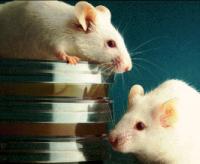Mouse Atlas of Gene Expression Summary
A Quantitative and Comprehensive Atlas of Gene Expression in Mouse Development

The complex process of development, from the one cell zygote to the adult, requires extensive cell-cell communication networks to direct the differentiation and patterning of the body. These signalling networks regulate the function and expression of genes. Significantly, many disorders, such as cancer, result from disruption of the same communication networks, and the genes they regulate, that operate within tissues during development. Because disease is the result of the normal state going awry, a detailed characterization of the normal state is essential. The mouse has emerged as the premier model in biomedical research for studying normal mammalian development and human disease. The high degree of genetic homology between mouse and humans and the powerful ability to modify the genome of the mouse have established the importance of this model organism in biomedical studies.
A deep understanding of mammalian development and the engineering of murine models for human disease requires an intimate knowledge of the molecules involved. Thus, we propose to construct an Atlas of gene expression. This Atlas will define the normal state for many tissues by determining, in a comprehensive and quantitative fashion, the number and identity of genes expressed throughout development. The scope of the project will encompass multiple stages of development, from the single cell zygote to the adult, and will include an extensive initial collection of 200 tissues. We will focus whenever possible on individual cell types and tissues rather than on cruder preparations of material containing heterogenous mixtures of cells or tissues.
Serial Analysis of Gene Expression (SAGE) is the gene expression methodology of choice for this work. Unlike expressed sequence tags (ESTs) and gene chip data, SAGE data are independent of prior gene discovery and are quantitative. Furthermore, SAGE data are digital, easily exchanged between laboratories for comparison and can be added to by scientists for years to come. Thus, this Atlas will include a data structure and data curation strategy that will facilitate the ongoing collection of gene expression data, even after the completion of this project.
In addition, we will assemble gene expression profiles for a few focused experiments that will test hypotheses related to the techniques employed, tumour models and models of abnormal development. This will test the resource and provide quality control, validation and demonstrate applicabilty.
The Atlas will provide an enabling resource to both clinical and basic researchers. The resource will be comprehensive, quantitative, and publicly accessible, containing data on essentialy all genes expressed throughout select stages of mouse development. We anticipate that this Atlas will become a primary resource for researchers spanning multiple disicplines to facilitate the understanding of complex genetic pathways controlling normal development and disease progression in the mouse. Thus, this is a timely, important, large-scale high-throughput project, with a broad scope and an anticipated significant impact on both basic science and cancer research.
